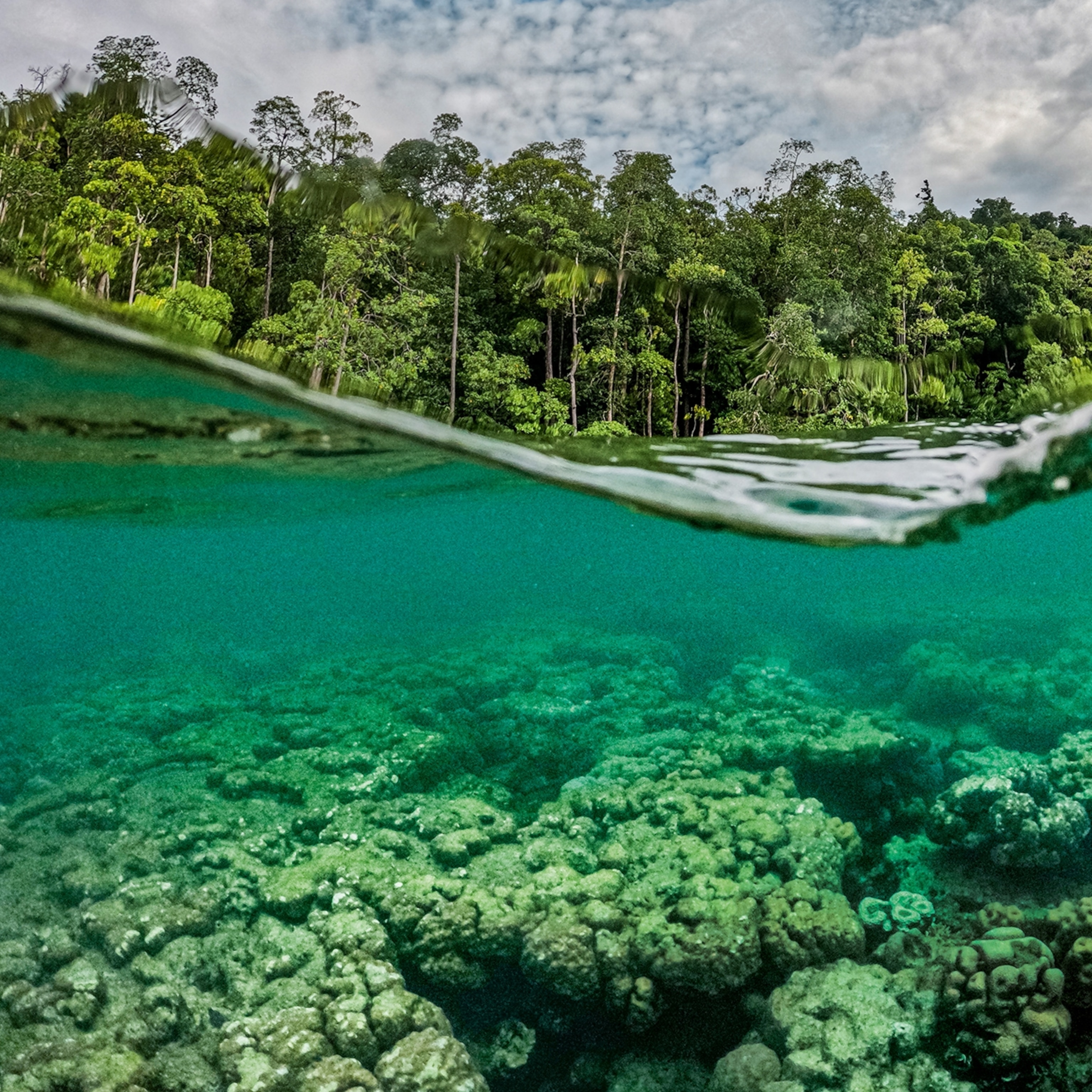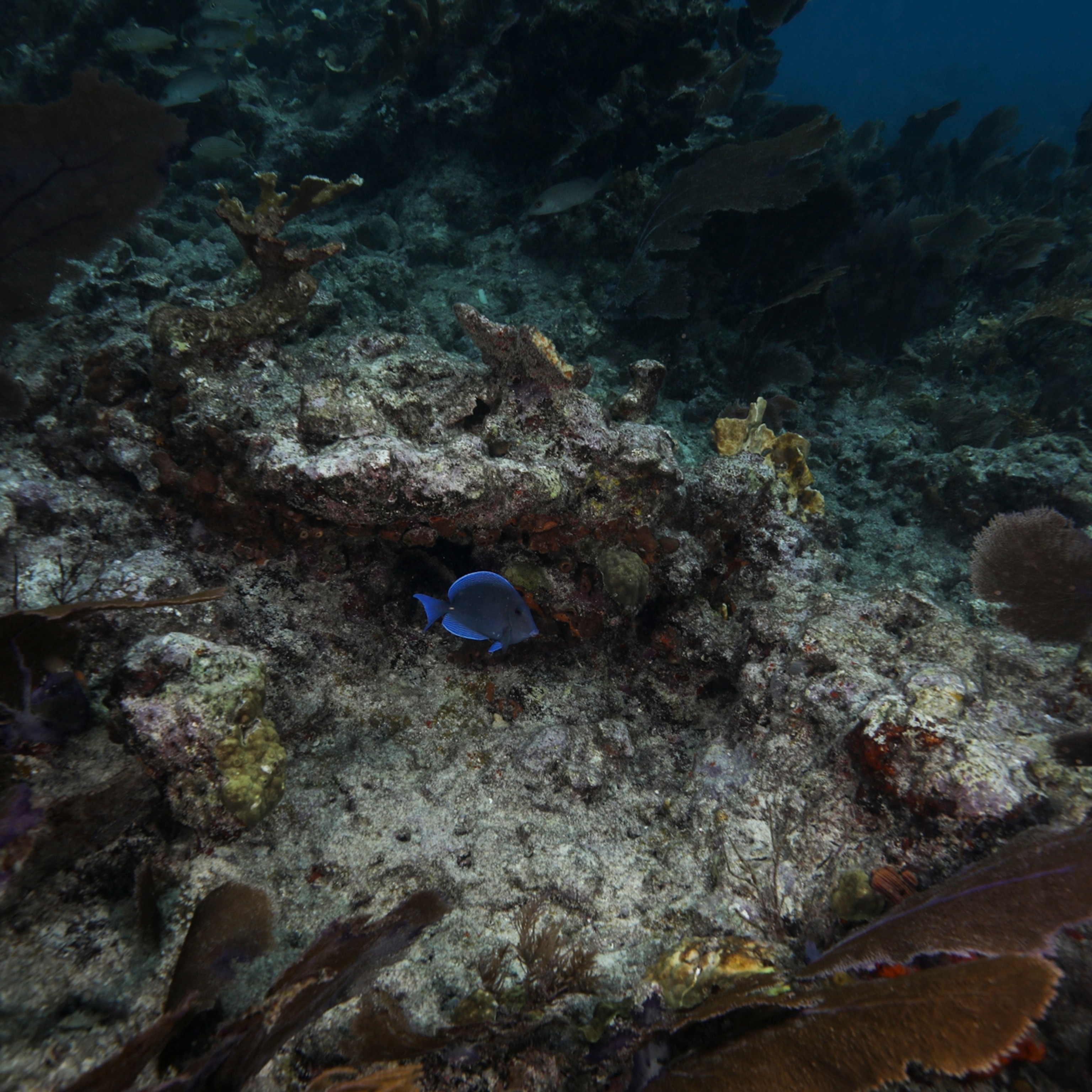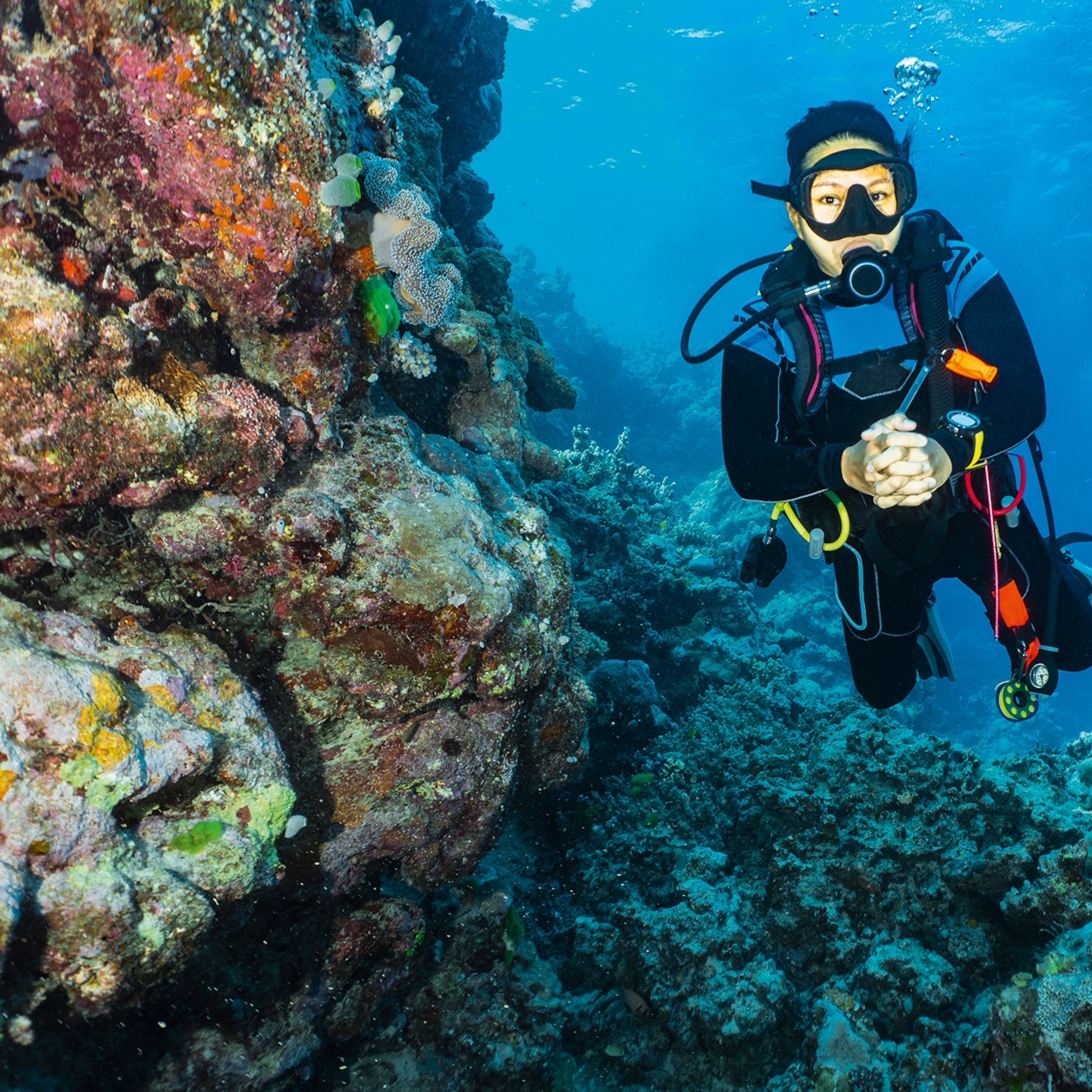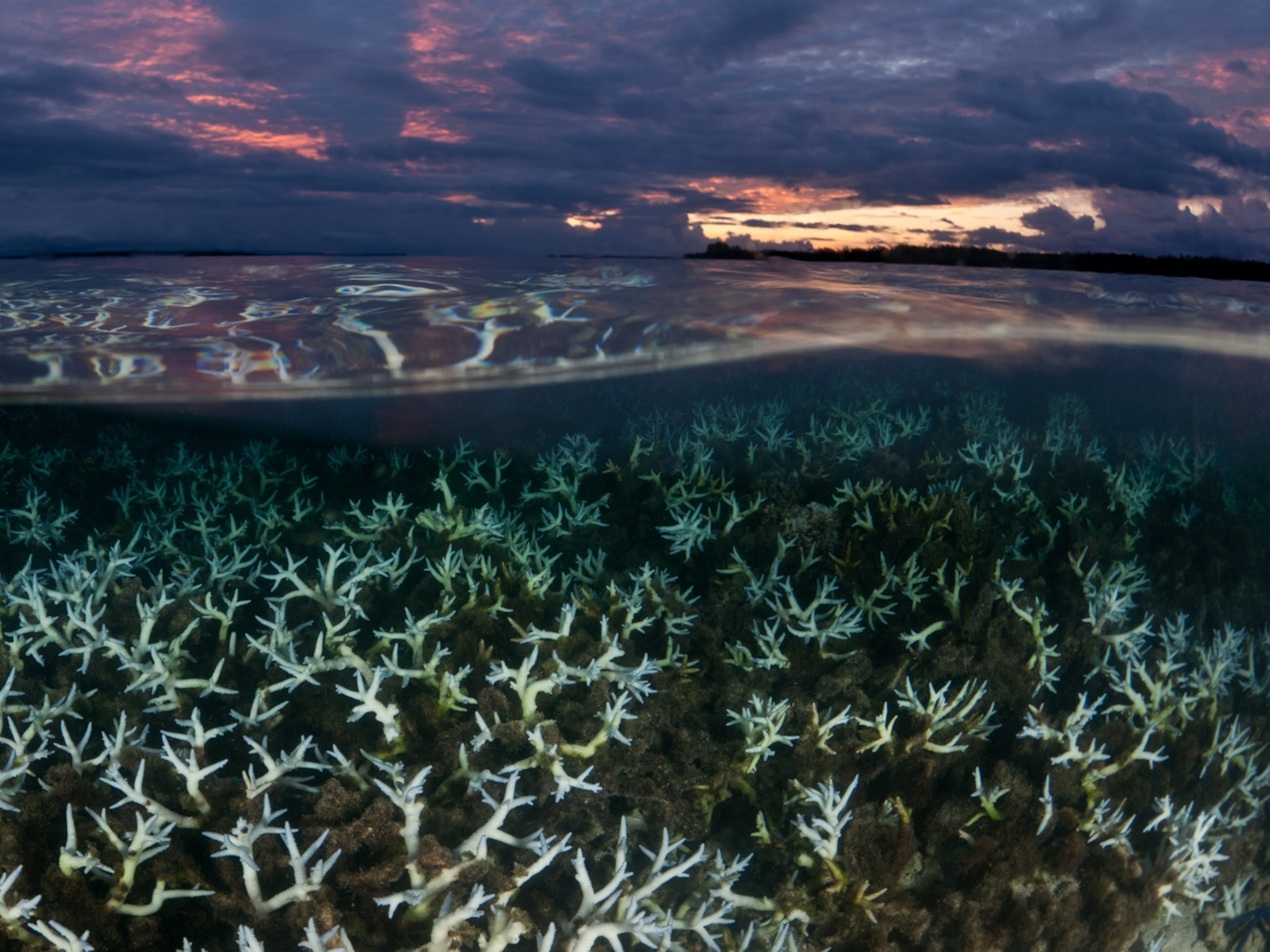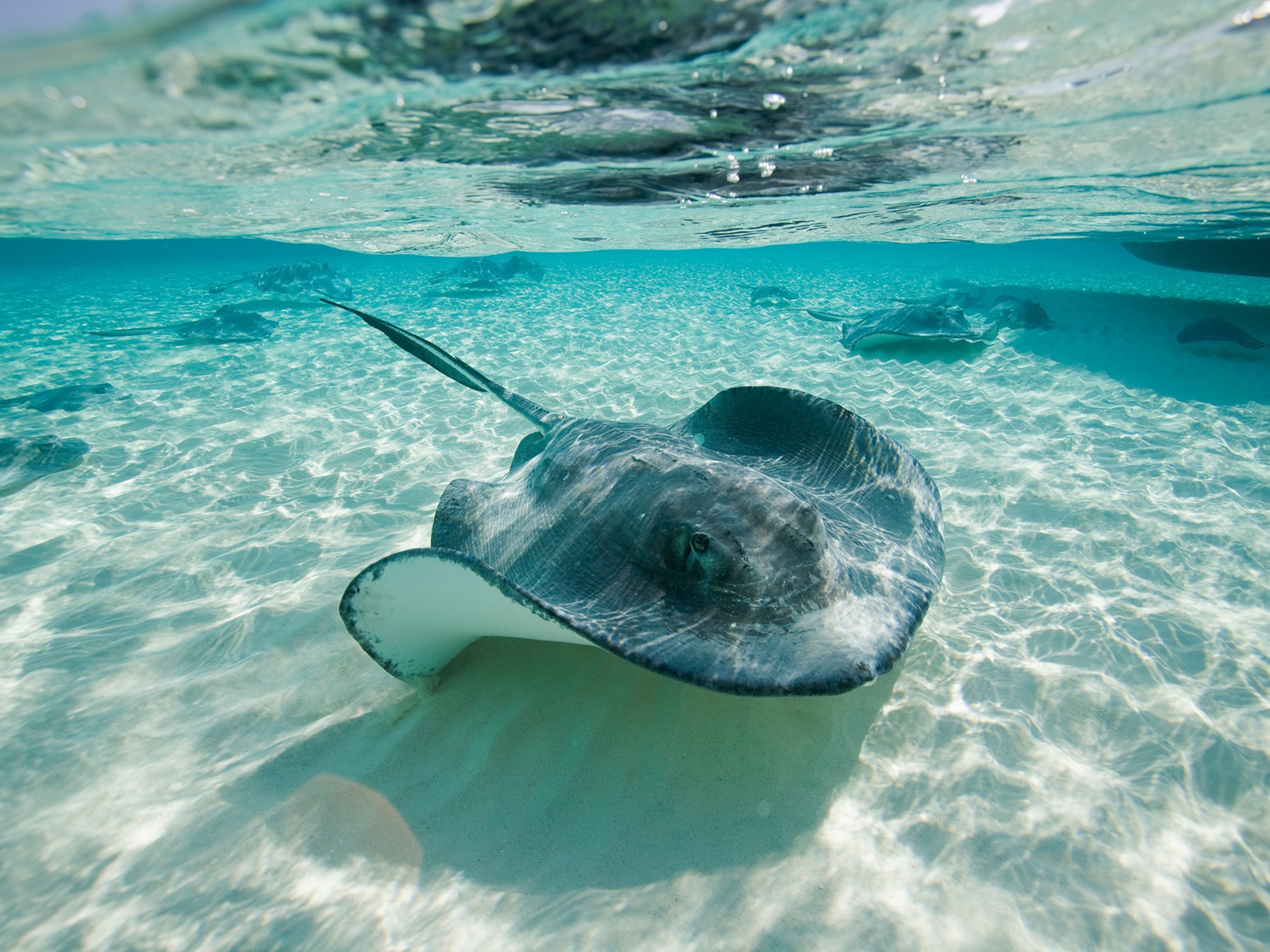
Can new science save dying coral reefs?
Researchers are grappling with how to preserve Australia's Great Barrier Reef—and coral reefs around the world—from warming seas.
Thirty miles off the coast of Queensland, Australia, a small piece of history was made last summer: Scientists transplanted hundreds of nursery-grown coral fragments onto the beleaguered Great Barrier Reef.
The process itself is not new—coral transplants have been used to help restore damaged reefs for decades. What’s new is that it’s happening on the world’s largest reef, an icon of marine life that has been dubbed one of the seven wonders of the natural world.

The Australian authority that manages the Great Barrier Reef has traditionally resisted intervening in the reef’s ecology, preferring to let it recover naturally. But the bruising reality of climate change is forcing a more hands-on approach.
A report released on November 28 by the US National Academies of Sciences, Engineering, and Medicine (NAS) comes to the same conclusion: Human intervention is needed to ensure the persistence of the world’s coral reefs, which are of incalculable value to “human well-being, national economies, and future wonder.”


“The coral report is a pragmatic list of tools for helping reefs survive climate,” says Stanford University biologist Stephen Palumbi, who chaired the NAS committee (and who is also a member of the National Geographic Society’s executive committee). “Kind of like what always happens when the panic of a crisis ebbs and you have to get down to solutions.”
On the Great Barrier Reef, that process has begun.
Almost a third dead
In 2016 and 2017, the Great Barrier Reef experienced back-to-back “marine heat waves”—periods of elevated sea temperatures that resulted in the death of almost a third of all the reef’s corals.
For reasons that still aren’t entirely clear, coral polyps respond to elevated heat by expelling the symbiotic, photosynthesizing algae that nourish them; the loss of colorful algae “bleaches” corals and can ultimately lead to their death. Coral cover in the northern section of the Great Barrier Reef—which stretches 1,400 miles (2,300 km), roughly the length of Florida’s coastline—is now at its lowest point on record.

Parts of Opal Reef, a popular dive tourism site and one of more than 2,900 individual reefs that make up the Great Barrier Reef system, suffered catastrophic mortality during the recent bleaching. It was here, in late August, that the coral transplantation took place.
David Suggett, a marine biologist who leads the Future Reefs Progam of the University of Technology Sydney, worked with a team of researchers and a local reef-tour company to take fragments of coral that had survived the bleaching and grow them on mesh platforms in a sandy lagoon adjacent to the reef. Twelve species were chosen, covering a range of coral forms from branching to plate-shaped to globular.
After a few months of growth and stabilization, these fragments were planted out using a novel type of clip that enables quick-and-easy attachment to the reef matrix.

The question the research is trying to answer, says Suggett, is whether propagation and outplanting of stress-surviving corals can speed up reef recovery, rather than having to rely on the slower natural process of coral reproduction to replace the individuals that died.
“The success of the project won’t be known until we have another marine heat wave,” says Suggett. That’s likely to be sooner rather than later.


The hammer and the vise
Large-scale coral bleaching events used to occur every 27 years, notes Australia’s independent climate-communication organization the Climate Council in a report on the reef published in July. The current rate is once every six years. If climate change is not curtailed, the report advises, by the 2030s the Great Barrier Reef could experience mass coral bleaching every two years.
By 2050, says the National Academies report, most of the world’s reefs will be exposed to bleaching conditions annually.
Corals can recover from bleaching, but not at that frequency. Hence the search for ways to boost coral abundance, such as the transplant technique Suggett is testing. Another Australian team is currently testing a different approach: They are seeding damaged patches of Great Barrier Reef with more than a million lab-raised coral larvae.

“Recovery is the key to having reefs in the future,” says Suggett.
But so is resilience. Reefs these days are not only suffering the hammer-blows of catastrophic bleaching events. They’re also being subjected to a slow, vise-like squeezing, as our carbon emissions steadily increase the background temperature and acidity of the water around them to levels that most corals haven’t encountered before.
Worldwide, a search is on for corals that have seen such conditions—hotspots of resilience where corals have already adapted to the extremes of heat and acidity that are likely to prevail on most reefs in the coming century. The idea is that such corals—or some of their critical genes, or the symbiotic algae that nourish them—can be transplanted to more vulnerable reefs, bolstering their chances of survival.
At some volcanic vents and submarine springs, for example, where CO2 bubbles naturally from the seafloor, corals form viable calcium-carbonate skeletons in water that’s acidic enough to be lethal to corals elsewhere. In American Samoa and in Palau, Stanford’s Palumbi and his colleagues have identified shallow-water corals with exceptional tolerance for heat, and they’ve also identified some of the genes that are responsible.

For sustained heat extremes, few marine environments match the Persian Gulf, where summer sea-surface temperatures peak at more than 95 degrees F (35 C). Yet more than 55 species of coral live there, with bleaching threshholds several degrees higher than those for most corals. Some of them incorporate heat-tolerant symbiotic algae which, if they could be introduced to other corals, might increase their bleaching resistance.

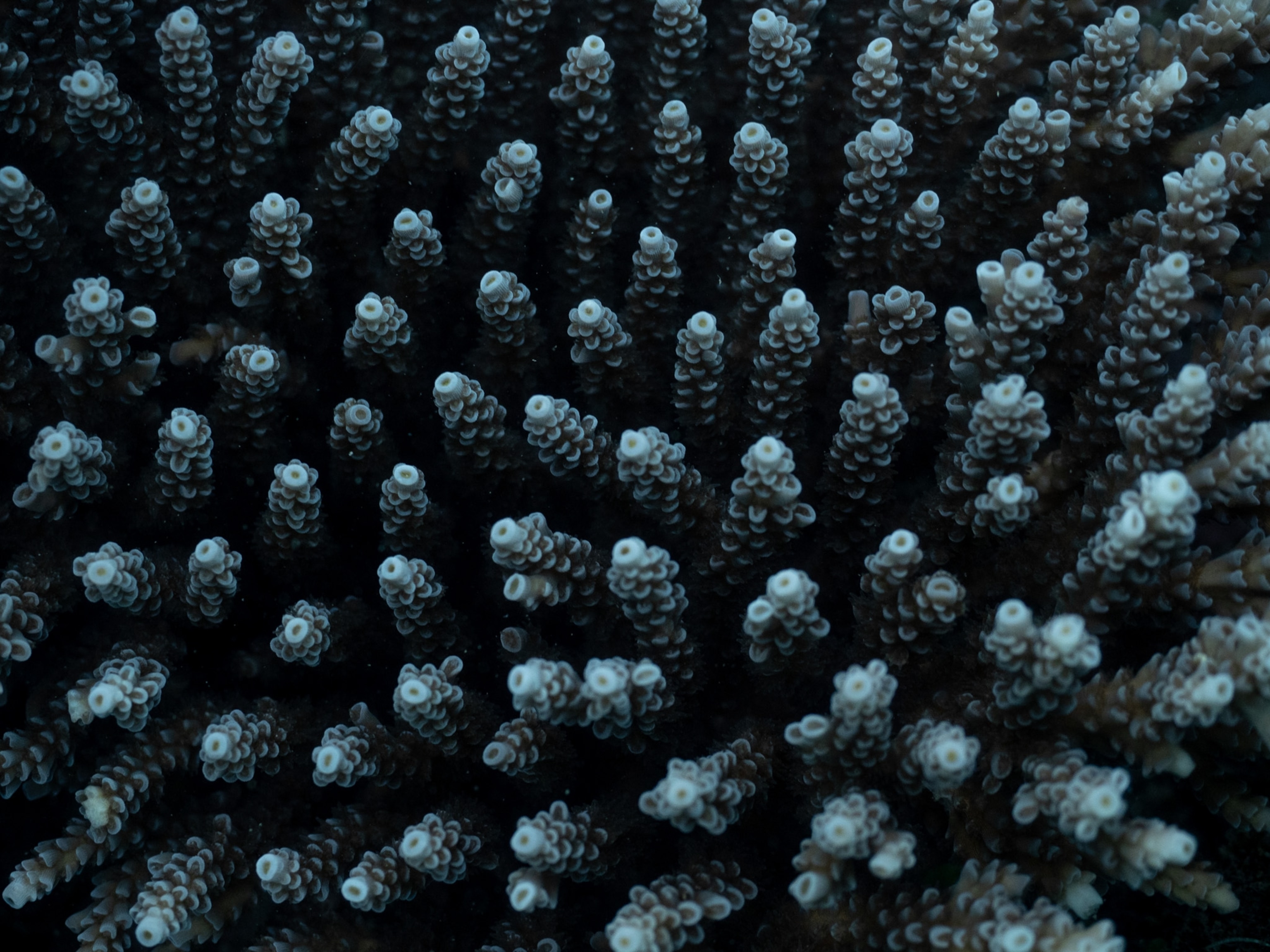
There’s a tradeoff to be weighed, however. Research has shown that one thermally tolerant symbiotic alga, while reducing bleaching mortality by 30 percent, also reduces coral growth rates by more than 50 percent. Corals on a vulnerable reef that received such algae as a transplant might be more likely to survive a bleaching event—but they would contribute less to the reef’s recovery or to its diversity.
Solutions from the mangroves
Suggett’s team has been looking for resilient corals in a different extreme environment: near mangroves. Twenty miles closer to the mainland from Opal Reef, off Port Douglas, lie the Low Isles, a coral platform bearing a pair of small islands—one a sandy cay that’s popular with snorkellers, and the other a mangrove swamp.
The shallow, sheltered waters in which mangroves grow are typically hotter than those flowing over an open reef, and the trees make them more acidic. Yet corals thrive here among the mangroves as well as offshore.
Suggett and his team have been studying the mangrove corals to find out what physiological and behavioral adaptations enable them to survive. They have transplanted corals from near mangroves to the reef further offshore—and vice versa.
Most coral polyps are nourished primarily by the photosynthesis of the symbiotic algae that reside in their tissues. The polyps typically remain retracted inside their skeletons during the day, emerging only at night to supplement their diet by using their tentacles to catch plankton and other organic particles in the water.

“At night there is more plankton in the water and less risk from visual predators, so it’s a logical time for polyps to be feeding,” says Suggett. “And of course photosynthesis doesn’t happen after dark.”
By contrast, the scientists often see the polyps of the mangrove corals extended during the day. The metabolic demands of living in that harsh environment may be driving increased feeding activity. “Presumably the benefit of boosting energy intake outweighs the risk of visibility to predators,” says Suggett. As the environment on open reefs gets harsher, active feeding may become a more necessary option for corals there too.

The coming climate onslaught
Climate pressures are intensifying and the time frames are short. Coral reefs are confronting not just rising heat and acidity but also declining oxygen levels, increasingly intense storms, and predators such as the infamous crown of thorns starfish, which remains a threat on the Great Barrier Reef.

Nevertheless, Suggett describes himself as a “pragmatic optimist” about the future. The great wild card, he points out, is the extent to which corals themselves are capable of adapting to the changes coming at them.
“Everywhere I go in the world, I see corals surviving where you would not expect them to,” Suggett says. “This gives me hope that there are coral communities that can cope with the stresses we’re throwing at reefs. Perhaps corals have been given less credit than they deserve in terms of their ability to tolerate and adapt to stress.”
One of the surprises at Low Isles, he says, was what happened when his team transplanted corals from the offshore reef into the mangrove lagoons—that is, from relatively benign conditions into hot, acidic ones. “We expected those corals to die,” Suggett says. “But after four months in the mangroves they have all done very well.”
That jibes with an observation by Palumbi’s team. The Stanford researchers found that the heat-tolerance genes they identified in corals in American Samoa are also present in corals in the cooler waters of the Cook Islands, 800 miles southeast. Researcher Rachael Bray, now at the University of California at Davis, found that these genes are rare in the Cook Islands today, but could spread as the waters warm.
At the rate humankind is emitting carbon, the researchers calculate, that spread probably won’t happen fast enough to ensure the survival of the reef. A slower emissions rate would help—but transplanting a few heat-tolerant corals from warmer climes could also speed the process along.
“What we’re trying to do with this work is understand what would happen in a situation where we had to rely on human intervention in order to keep reefs viable,” Suggett says. “That’s not what we want, of course. Plan A is to reduce emissions, solve climate change and take away the threat to reefs. But we have to prepare for the possibility of Plan F—dealing with global reef meltdown.
“Everyone’s wary about intervention, and rightly so, because the larger the scale of reef restoration the larger the ecological ripple effects. Let’s hope we don’t need to go there, but let’s understand the science in case we do.”

